Text trapped inside an image might as well be invisible if you can’t understand it. The content is right in front of you, but it’s locked away by a language barrier. Typing it out by hand is painfully slow, and even then the translation often comes out incomplete. Hence, tools built to translate text in image have become essential in 2025. Along with recognizing words; they give you clear, accurate translations in seconds. In this guide, I’ll show you exactly how to use three standout tools in 2025 to turn unreadable images into clear, useful text.
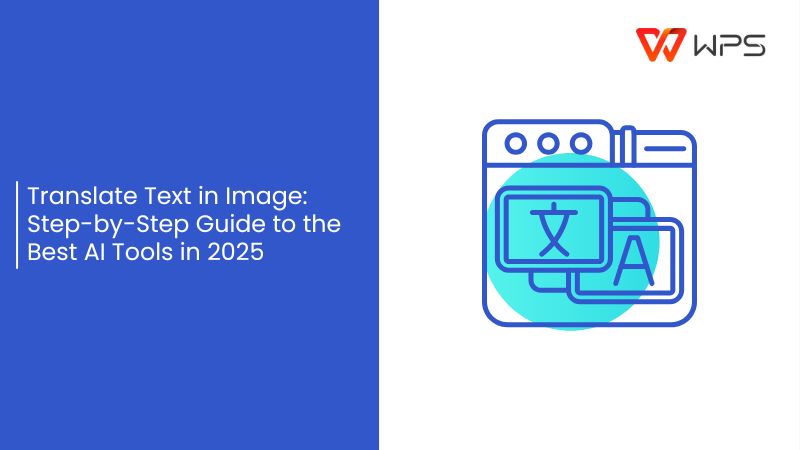
Why Use AI Tools to Translate Text in Image?
Anyone who’s looking into ways to translate text in image should know that the key lies in accuracy. Traditional OCR tools often let me down with half-recognized characters, broken formatting, and translations that felt disconnected from the actual context. AI tools changed that. They don’t just scan for letters; they analyze the language structure, preserve layouts, and even handle less common scripts like Japanese or Arabic with far fewer mistakes. That difference matters if you’re working with certificates, research papers, or even product manuals where every word needs to be correct.
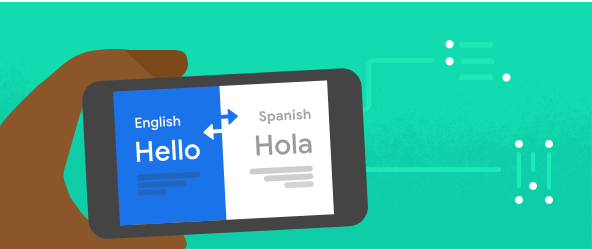
Here’s why using AI to translate text in image is a game-changer:
Faster than manual typing: You simply upload or snap a picture, and the text is recognized instantly.
Accuracy across multiple languages: From Japanese and Korean characters to Arabic and Cyrillic, modern tools understand context better than older OCR programs.
Preserves formatting: For flyers, certificates, or infographics, keeping the design intact is often as important as the translation itself.
Batch processing: Some tools let you upload multiple images or documents at once, saving time for larger projects.
Understanding the value is one thing, but seeing how these tools work in practice is where the real clarity comes in.
How to Use AI Tools to Translate Text in Image
AI tools may look simple on the surface, but the way you upload an image, select the language, or use extra options like layout preservation can completely change the outcome. A low-quality photo of a receipt needs different handling than a neatly scanned PDF, and knowing these small distinctions is what makes the translation accurate instead of messy.
1. Canva
Canva Translateis designed for anyone working with visuals where layout matters. Instead of extracting the text and pasting it back, it automatically replaces the content while preserving fonts, alignment, and overall design. This makes it effective for marketing graphics, presentations, and social media posts where accuracy and appearance go hand in hand.
Step 1: Head over to Canva’s Online Image Translator and click “Translate an Image”. This takes you straight to the design screen where you can start translating.
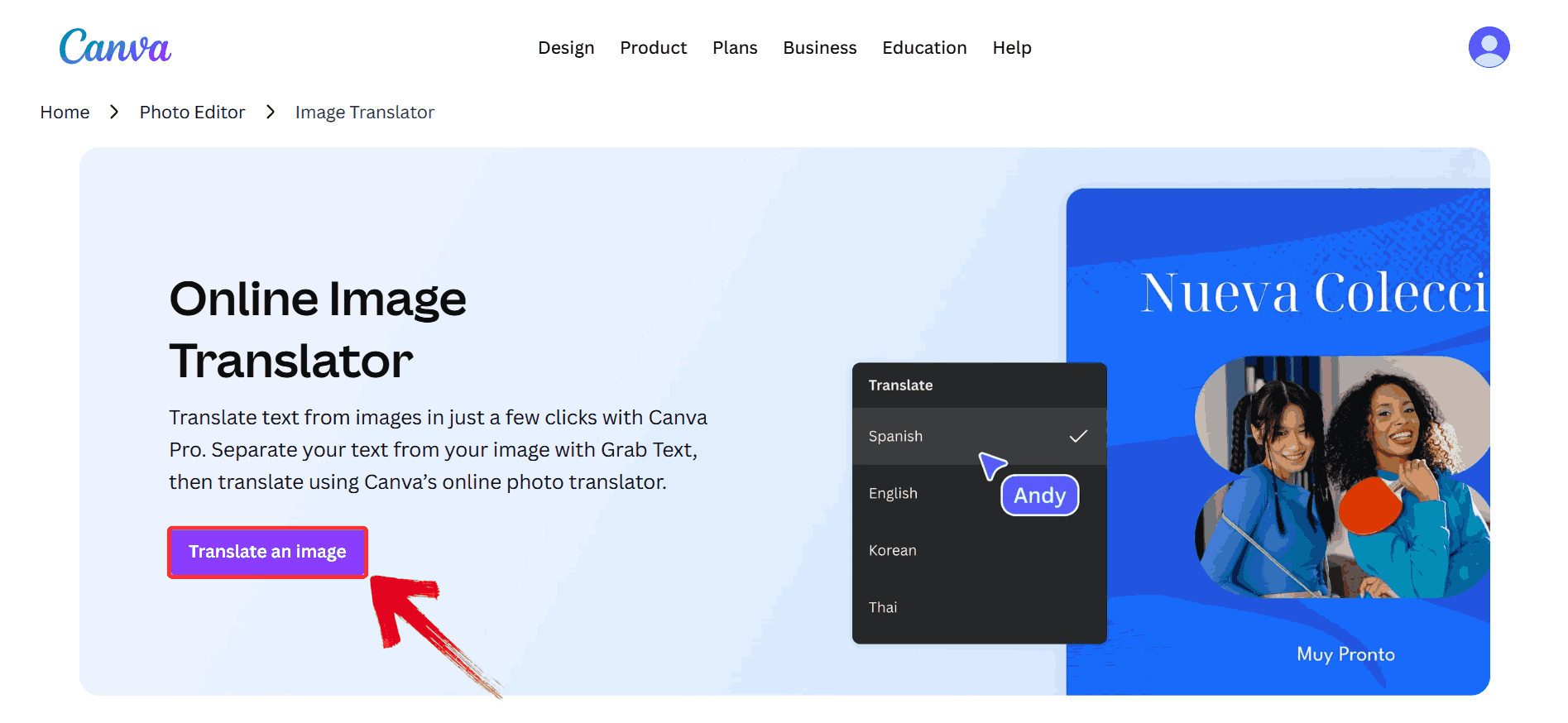
Step 2: Upload both images by using the“Uploads” tab on the left then clicking on“Upload files”.
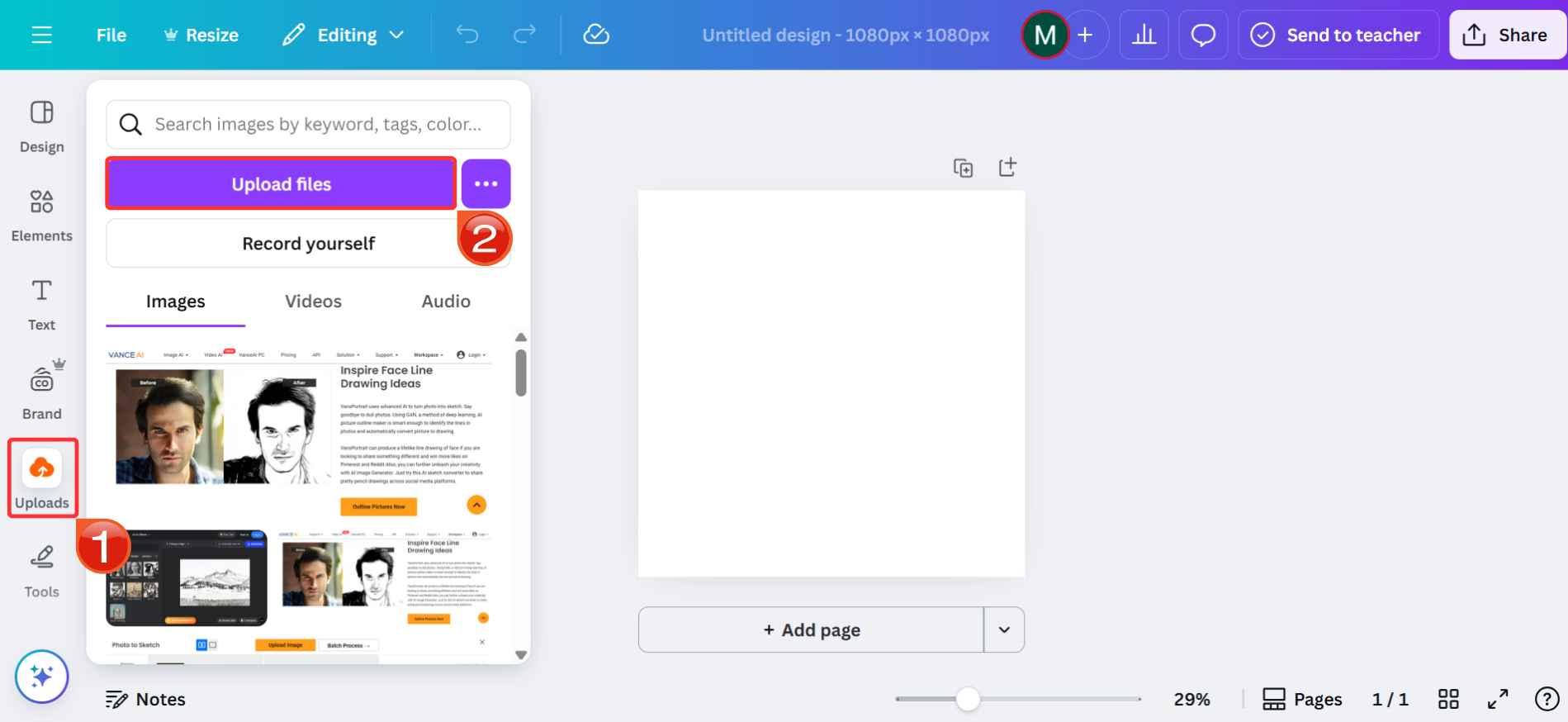
Step 3: Scroll down the left-hand bar and select“Translate” from the Apps section.

Step 4: Select the language you want to translate into from the dropdown menu, then click “Translate.”Canva will process the text instantly.
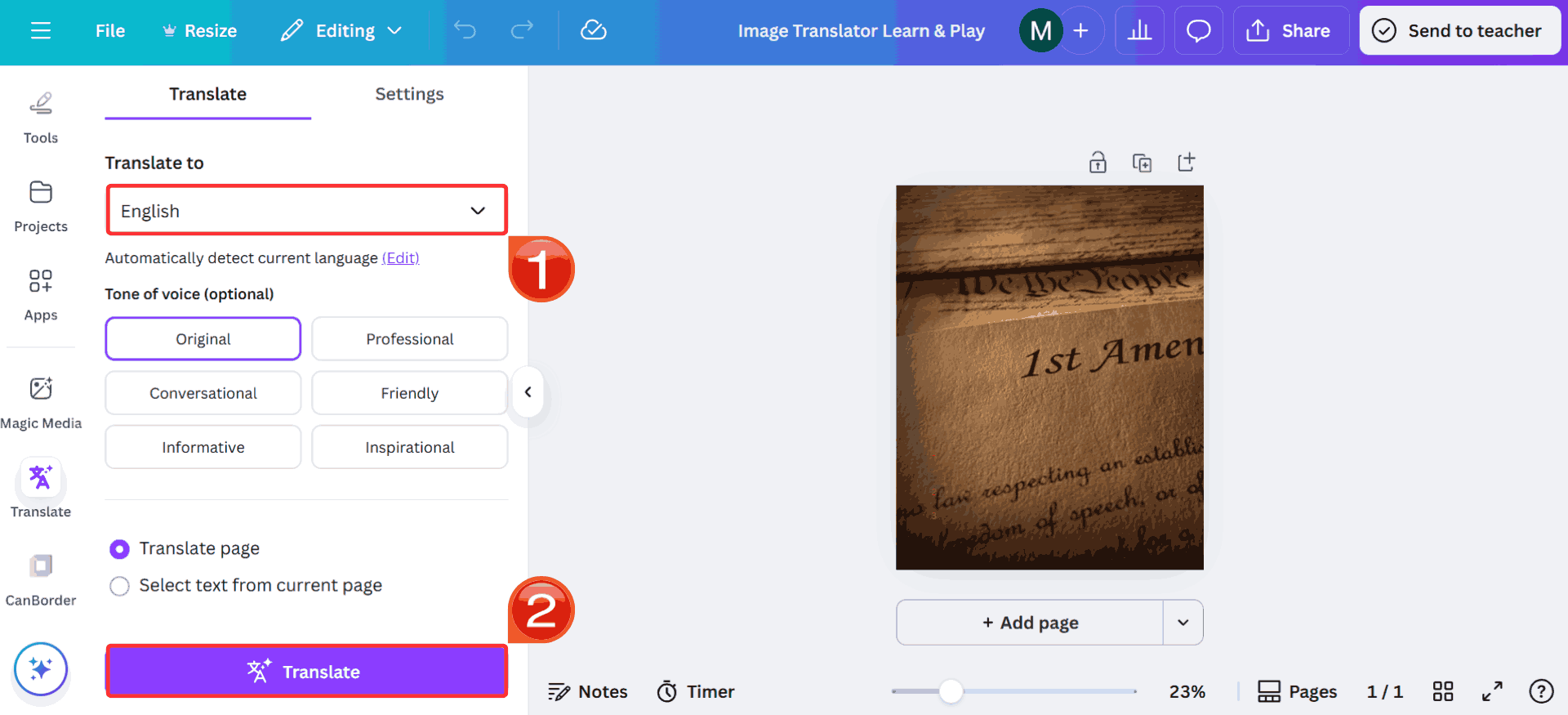
Step 5: Once it’s translated, click“Share” in the top right, then“Download” to save the final design to your device.
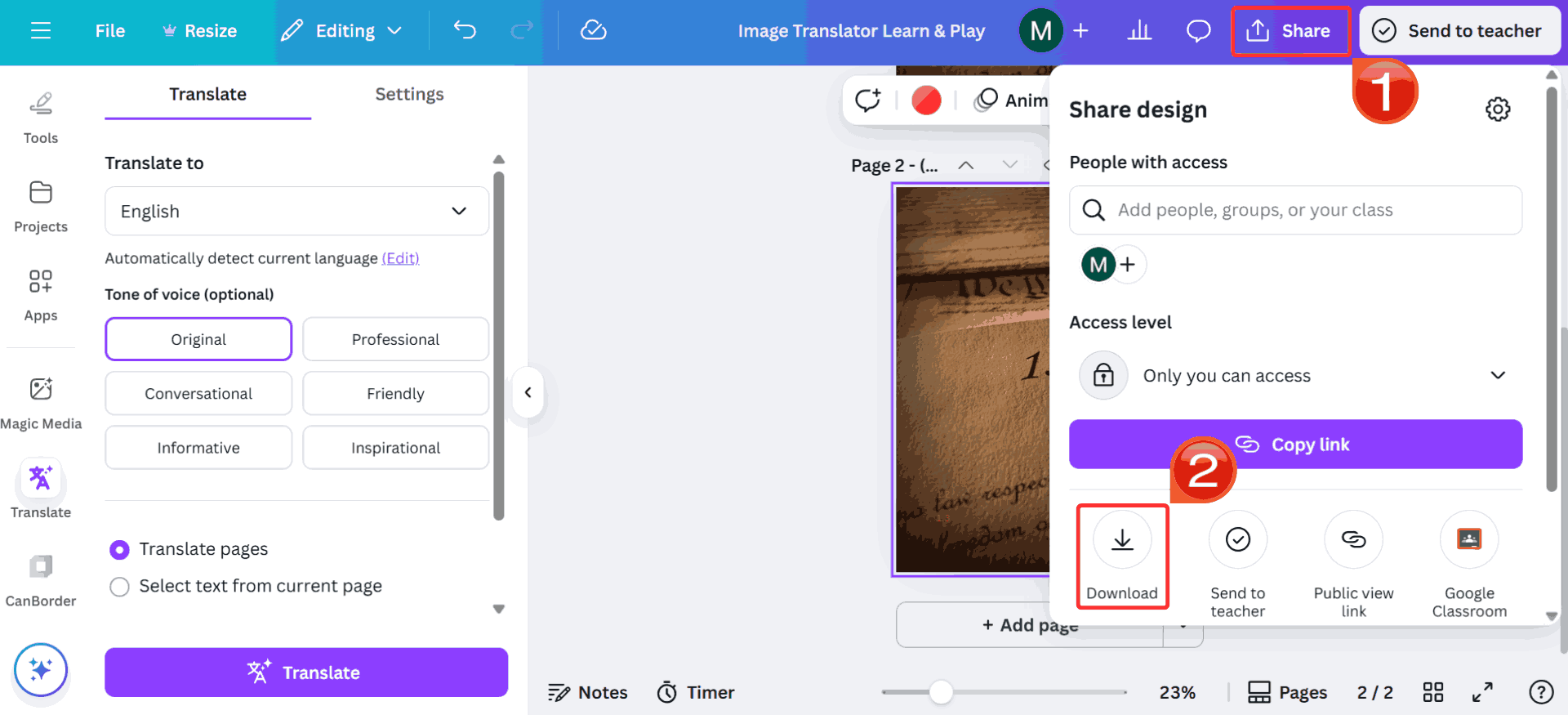
2. Google Translate
Google Translate remains one of the most accessible free options for quick text extraction and translation. Its image feature uses OCR to pull out words directly from a photo or screenshot, then converts them into your chosen language within seconds. While it’s not built for refined layouts like Canva, it’s almost perfect for everyday use such as reading street signs, menus, or scanned documents.
Step 1: Go to Google Translate and switch to the “Images” option. This puts you in the right mode for picture-based translation.
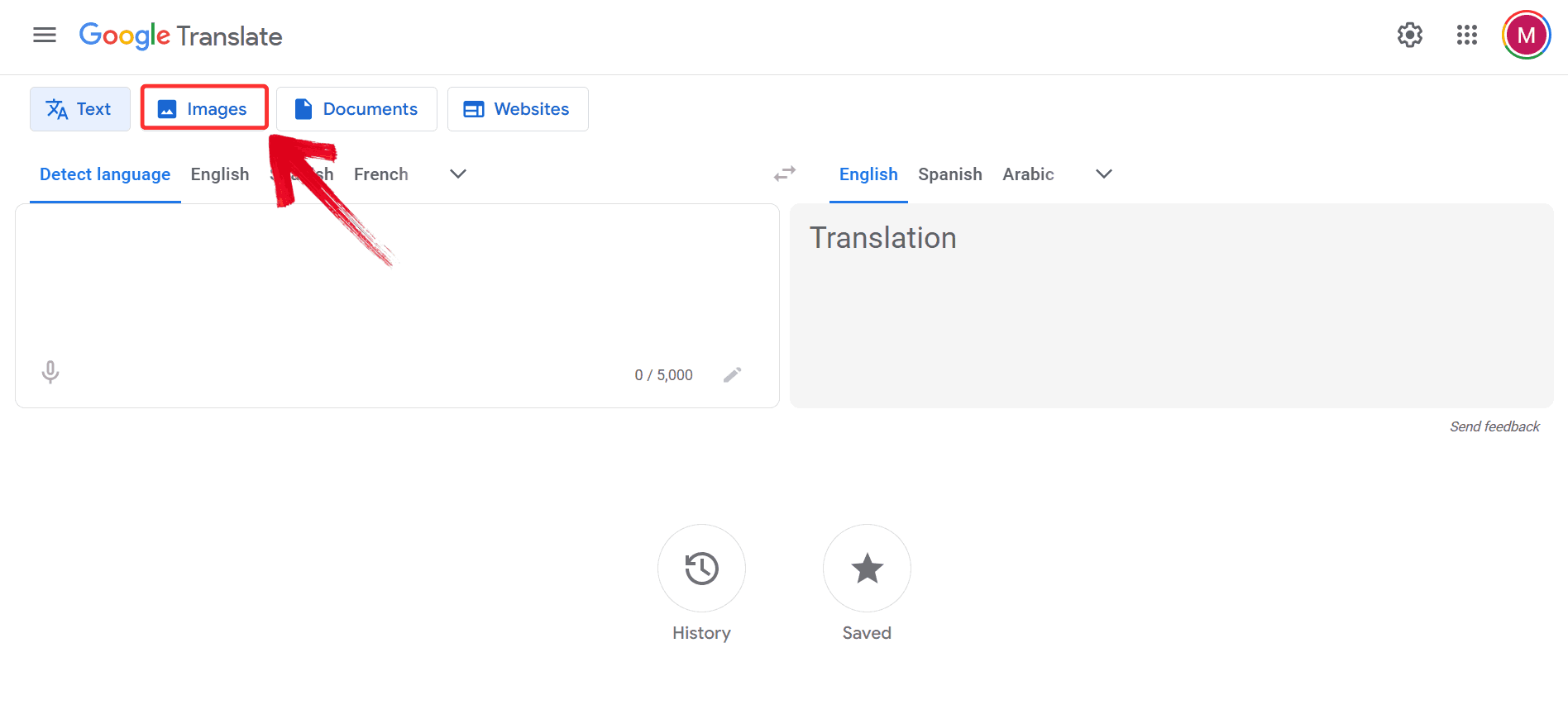
Step 2: Select the language you want to translate into, then click “Browse your files” to upload the image.
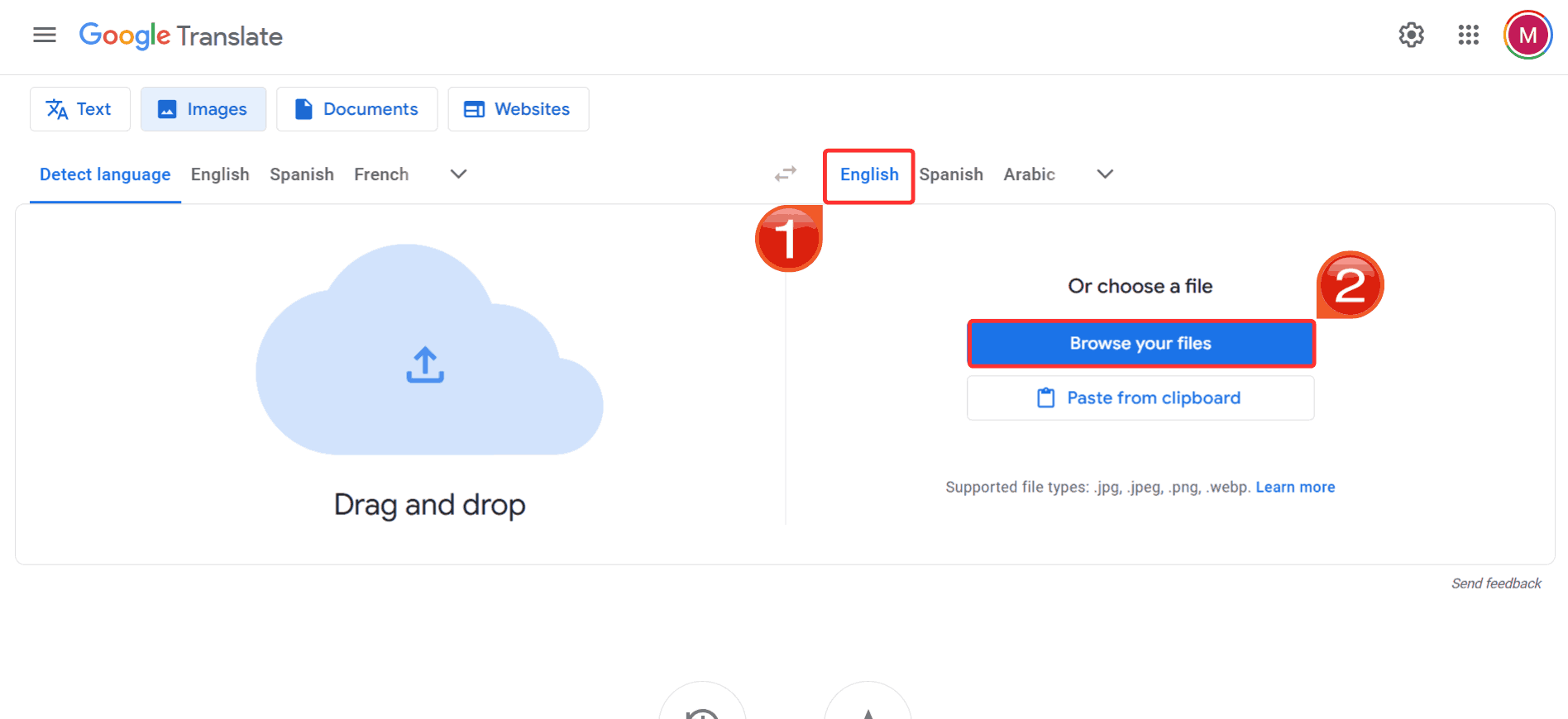
Step 3: Once the text is processed, click on“Download translation” to save the translated version of your image.

3. AnyDoc Translator
AnyDoc Translator is best suited for when you need a more precise translation than what casual tools can provide. It reads text directly from images and documents with OCR and delivers context-aware results instead of just word-for-word conversions. That makes it a great choice if you’re dealing with scanned files, study notes, or certificates where clarity really matters.
Step 1: Open your browser and go to the AnyDoc Translator website.
Step 2: On the homepage, click the“Translator” tab in the top toolbar.
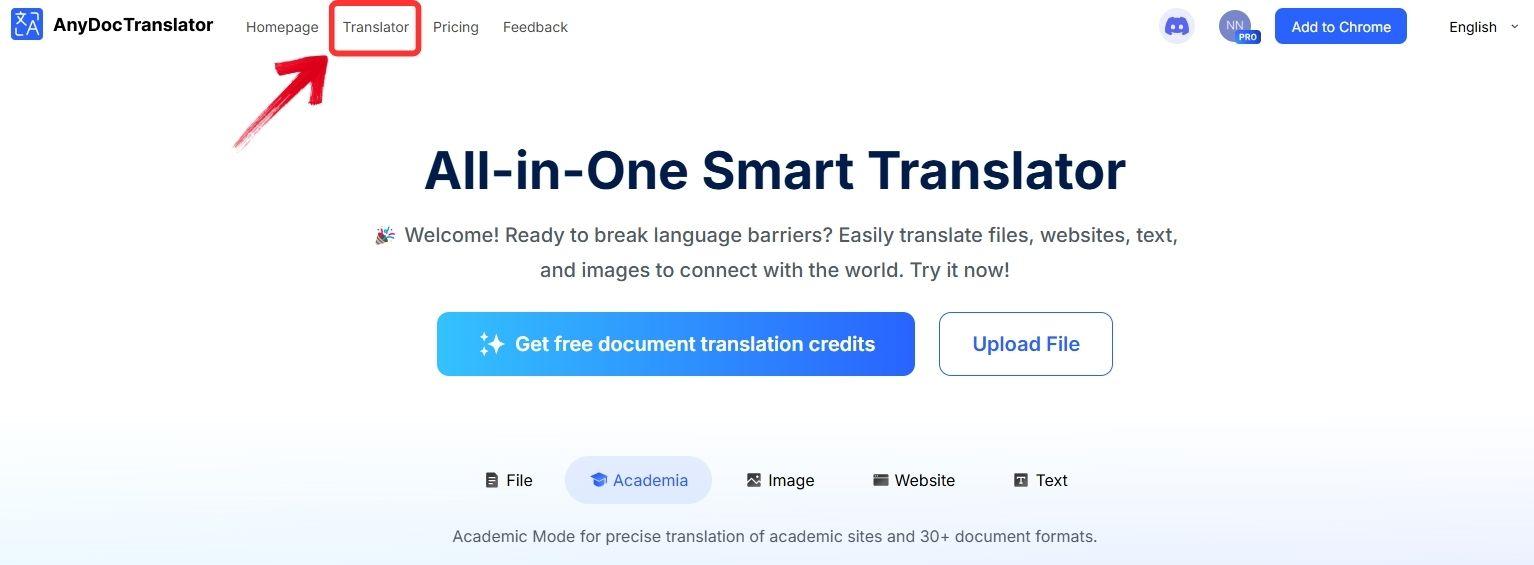
Step 3: AnyDoc supports translation for PDFs, text files, images, and even websites. For this guide, select the“Translate Image” tab.

Step 4: Click the “Select from your computer” button to upload the image you want to translate, or drag and drop it into the upload area.
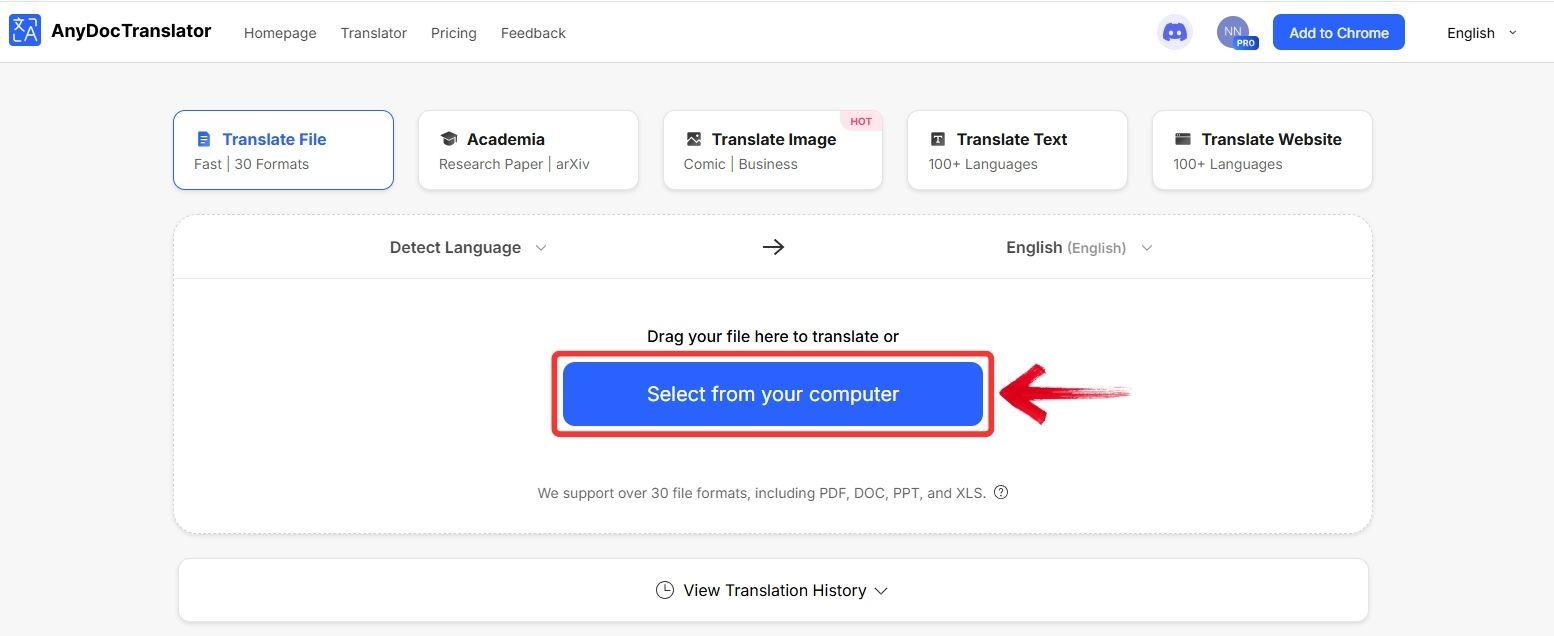
Step 5: Wait while AnyDoc processes the image. This usually takes around 5–20 seconds, depending on the amount of text.
Step 6: Once the translation is complete, you’ll see a preview of your image with the translated text. You can also change the source or target language using the dropdown menu.
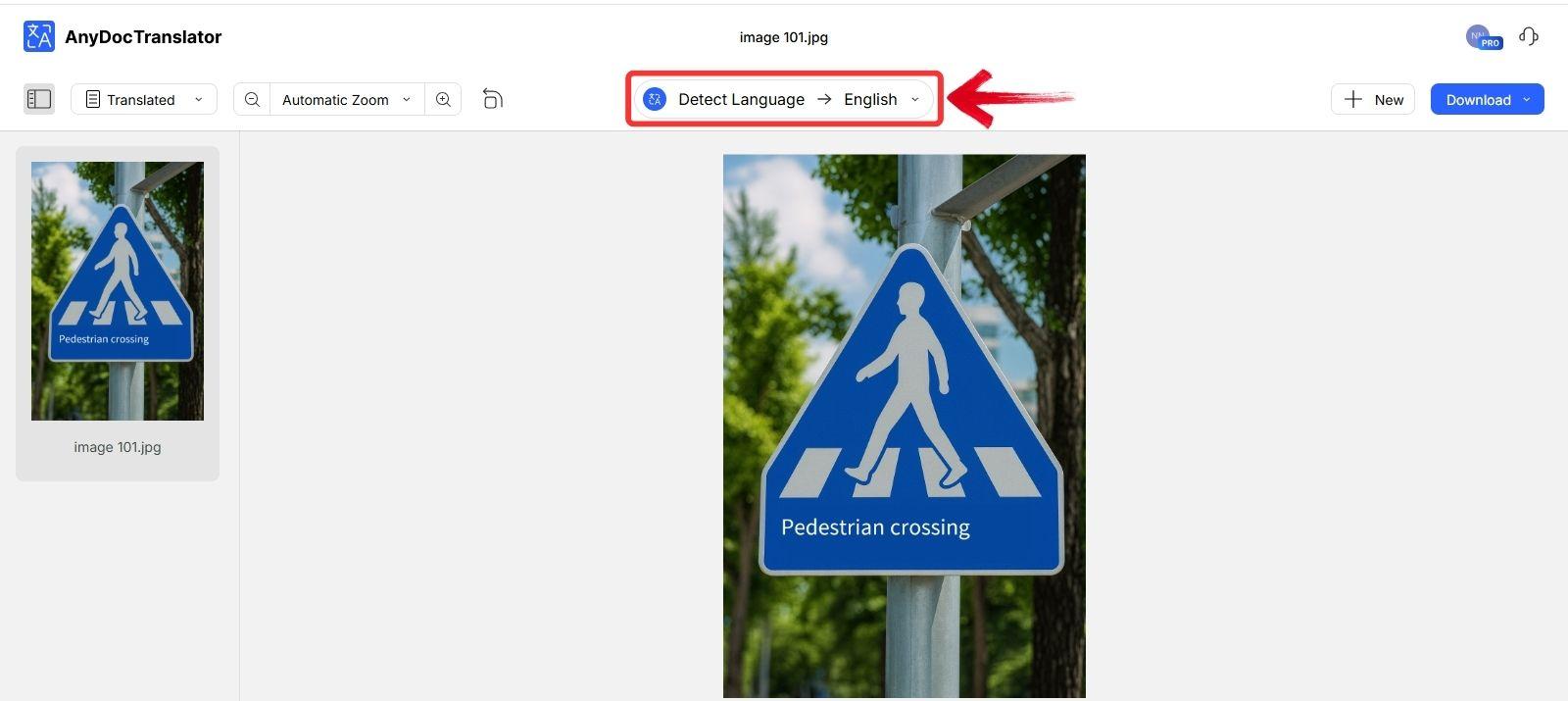
Step 7: To copy the translated text, click on the translated area within the image. A “Copy” option will appear, click it to copy the text to your clipboard.

Step 8: To save the results, click the“Download” button. You can choose to download the image with the translated text or just the translated text as a .TXT file.

ToolSmart AI Hub – AnyDoc Translator in Depth
AnyDoc Translator goes a step further than the lighter tools covered earlier. Its main strength lies in precision: handling scanned documents, certificates, and multi-page PDFs without making the layout scrambled. The built-in OCR picks up even faint or angled text, which makes it useful for academic or professional material where accuracy is non-negotiable. Beyond that, it also works steadily with screenshots or images, so you’re not limited to formal documents. Being part of the ToolSmart AI Hub, it integrates nicely with other productivity apps such as Toolsmart’s Image Enhancer, giving it an edge if you want consistency across different types of work.
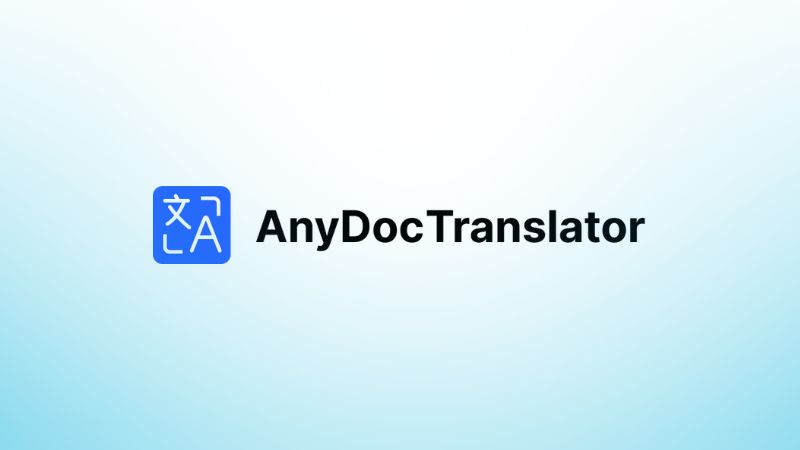
Using AnyDoc Translator gives you more than just quick translations as it also adds layers of efficiency that general tools can’t always match. Here are some of the key benefits that set it apart and make it worth considering in 2025.
Instantly translates full documents, PDFs, and web content
Built-in OCR (optical character recognition) for image and screenshottranslation
Smooth integration with Windows systems
Lightweight and runs in the background while studying
Together, these features make AnyDoc Translator a practical companion for both daily tasks and more demanding projects.
Comparison Table of Tools
When I finished working with all three tools, the differences weren’t always obvious until I put them next to each other. Canva, for example, excels at keeping fonts and colors intact, something you don’t get from Google Translate. On the other hand, AnyDoc handles long PDFs in a way Canva couldn’t. Instead of leaving you to figure this out the hard way, I’ve broken their core strengths into a simple table so you can decide which tool actually fits your kind of work.
| Feature | Canva | Google Translate | AnyDoc Translator |
|---|---|---|---|
| Best For | Posters, flyers, designs | Travel, casual use | Documents, contracts, PDFs |
| Platform | Web & App | Mobile App | Web (AI Hub) |
| Layout Preservation | Yes | No | Yes |
| Offline Use | No | Yes (with language packs) | No |
| Batch Processing | Limited | No | Yes |
| Export Options | Editable design in Canva | Text copy only | Word, Excel, PDF |
Even though all three tools get the job done, AnyDoc Translator handles situations the others stumble on. Long documents, scanned PDFs, or images with tricky formatting don’t slow it down, and you don’t have to redothe layout afterward.
FAQs
1. Can I translate Japanese anime screenshots with these tools?
Yes. Google Translate works great for casual screenshots, but if you want to preserve subtitles or edit designs, Canva or AnyDoc may be better.
2. Are these tools free?
Google Translate is free. Canva offers free translation with design features, but advanced tools may require Canva Pro. AnyDoc is part of ToolSmart AI Hub and offers both free trials and paid tiers.
3. Which tool is safest for sensitive documents?
AnyDoc is the most secure since it uses encrypted transfers and is designed for professional use. Avoid uploading confidential contracts to casual apps.
In Translation with AnyDoc
Working with images that hold important text no longer has to be a nuisance. AI tools now make it possible to translate text in image with accuracy and speed that manual typing could never match. Canva is perfect if you care about design and layout, Google Translate is unbeatable for quick everyday translations, and AnyDoc Translator takes the lead when handling full documents with precision. Each of these options serves a different purpose, but together they cover almost every situation where text in images gets in your way. Free tools still have their place for one-off tasks, but when reliability and context matter, advanced translators like AnyDoc are the ones you can count on.





